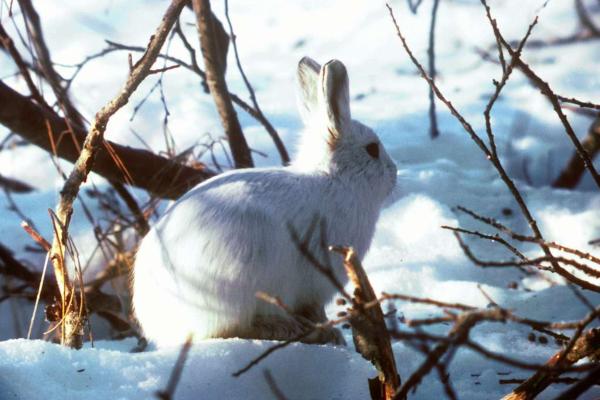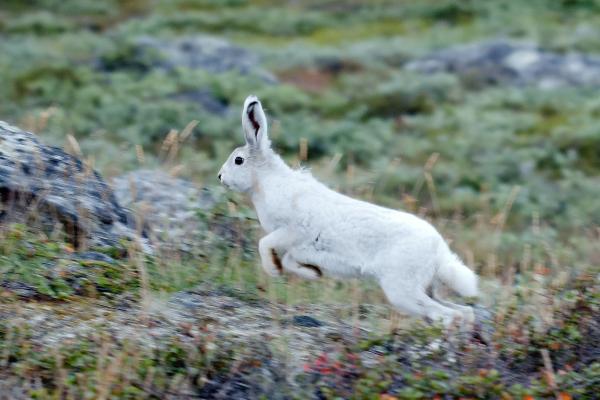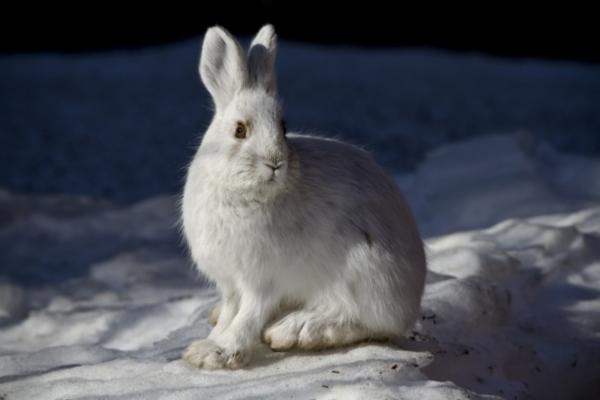The Arctic hare (Lepus arcticus) is a remarkable mammal that thrives in some of the harshest environments on Earth. Known for its resilience to freezing temperatures and its vital role in tundra ecosystems, the Arctic hare is an essential species in the polar food web. This comprehensive guide covers everything about the Arctic hare’s characteristics, habitat, feeding habits, behavioral patterns, and reproductive strategy, providing detailed.

Physical Appearance and Classification:
The Arctic hare belongs to the family Leporidae, sharing close kinship with rabbits but distinguished by a larger body, shorter ears, and enhanced cold tolerance.
Seasonal Fur Changes:
Its fur color changes with the seasons—thick, long, and pure white during winter for camouflage in the snow, and grayish-brown or bluish-gray in summer to blend with the tundra landscape. The underbelly remains brownish year-round, and the black-tipped ears help conserve heat.
Fat and Insulation:
The body is made up of about 20% fat, providing additional insulation along with its dense fur coat.
Burrowing Habit:
Arctic hares dig underground burrows or snow dens to find warmer conditions and shelter from the elements.
Lifespan and Subspecies:
Wild Arctic hares typically live 3–5 years; there are four recognized subspecies: L. arcticus arcticus, L. arcticus bangsii, L. arcticus groenlandicus, and L. arcticus monstrabilis.
Arctic hares are found throughout northern Greenland and Canada, including Ellesmere Island, Newfoundland, and Labrador, at elevations up to 900 meters. During the breeding season, their range expands, particularly for males searching for mates. Their preferred habitats include Arctic tundra, rocky plateaus, and open grasslands, all characterized by extreme cold (average -27°C) and substantial snowfall.

Arctic hares are primarily herbivores with a plant-based diet, using strong forepaws to dig through snow in search of food. Their main dietary items include:
Woody Plants:
Such as saxifrage, blueberry, and especially dwarf willow, which can make up 95% of their diet.
Summer Variety:
In summer, their diet broadens to include lichens, mosses, flowers, leaves, twigs, roots, and even large algae.
Occasional Meat:
They may also eat fish or small animals, particularly those caught in hunters’ traps.
Water Source:
Arctic hares consume snow to meet their water needs.
Nocturnal and Social Habits:
Usually nocturnal and solitary outside of the breeding season, Arctic hares may also form large groups exceeding 100 individuals, taking turns to rest and keep watch for predators.
Speed and Swimming Ability:
They move by hopping and can reach running speeds of up to 64 km/h (40 mph). They are also adept swimmers.
Evasion Techniques:
When threatened, they may move using both hind legs and only one foreleg, leaving a three-toed trail that can confuse predators.
Burrowing for Warmth:
Regularly dig dens in the snow or soil to seek warmer temperatures for resting and feeding.

Breeding Season:
The mating season occurs in late spring and early summer, with females giving birth once a year after a gestation period of about 50 days.
Sexual Maturity and Mating:
Arctic hares reach sexual maturity at about 315 days old (the spring after birth). Males court females through grooming and physical contact, and pairs remain together until the young are born.
Litter Size:
Females give birth to litters of 2 to 8 leverets (young hares), which are cared for solely by the mother while the male typically seeks a new mate.
Keywords:
Arctic hare, Lepus arcticus, Arctic hare features, Arctic hare habitat, what do Arctic hares eat, tundra mammals, polar animals, Arctic animal behavior, Arctic hare reproduction
Bibliography
Betzler B. Lepus arcticus, Arctic hare. Available at: https://animaldiversity.org/accounts/Lepus_arcticus/
Integrated Taxonomic Information System. Available at: https://www.itis.gov/
Lepus arcticus. Available at: https://www.mindat.org/taxon-2436696.html
IUCN. Available at:https://www.iucnredlist.org/fr/species/41274/45185887
animal tags: Arctic Hare
We created this article in conjunction with AI technology, then made sure it was fact-checked and edited by a Animals Top editor.